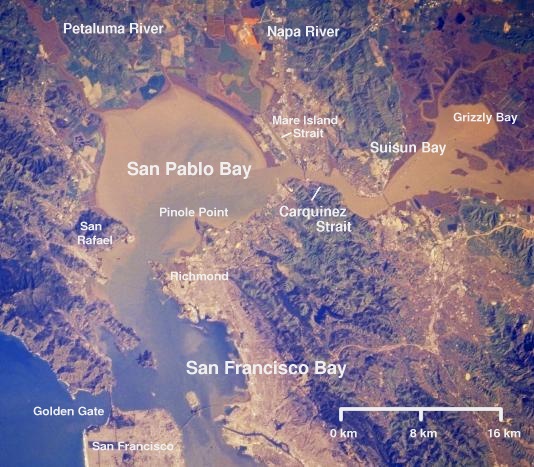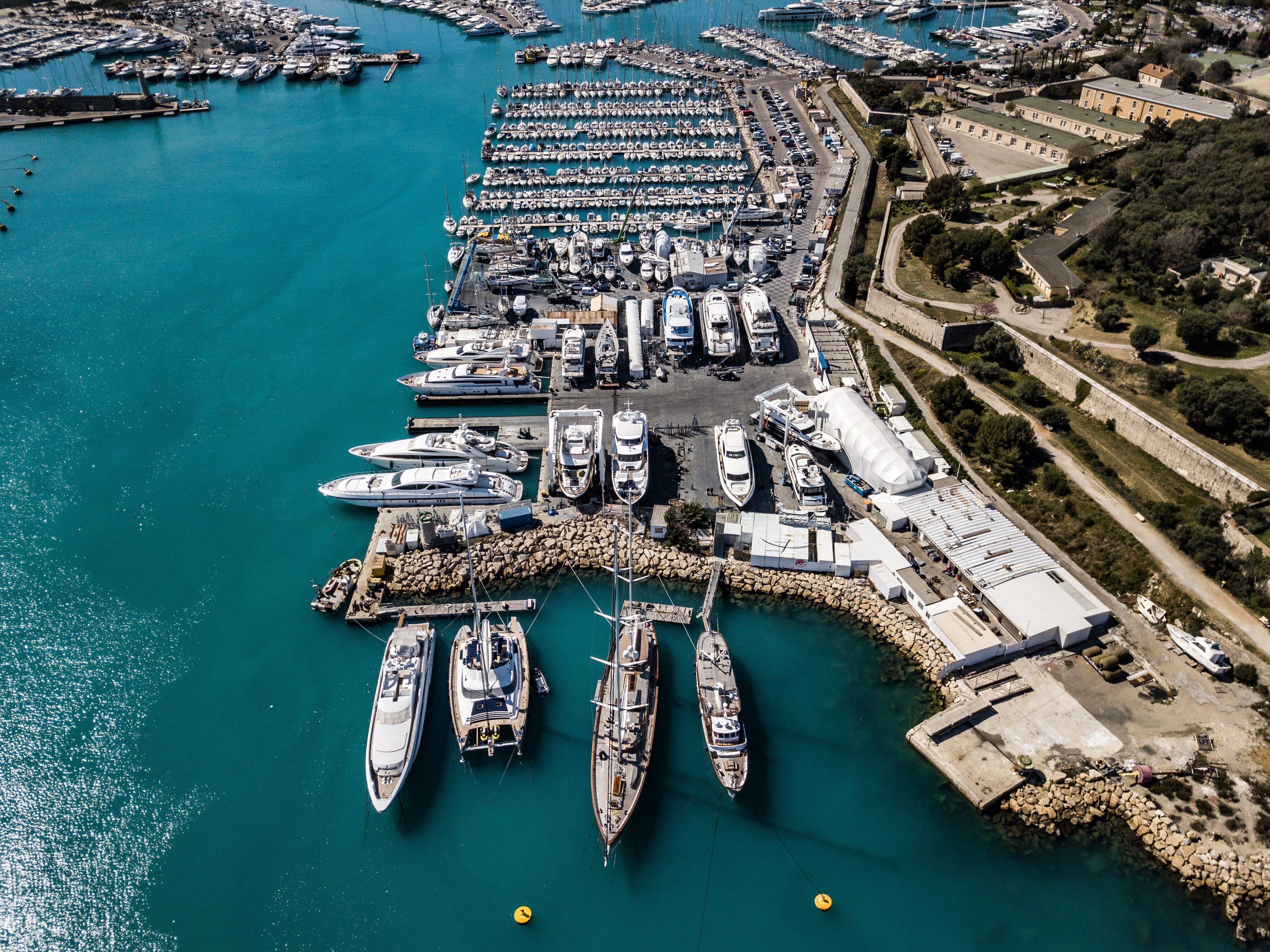|
Kyle And Company
Kyle & Company or Kyle & Co was a steel shipbuilding company in Stockton, California. To support the World War II demand for ships Kyle & Company built: Coastal tankers and Type B ship deck barges. Kyle & Company was opened as a manufacturer of steel products and build ships for the war. After World War II, the shipyard closed in 1950 and was purchased by Pittsburgh-Des Moines Steel Co. Kyle & Company also made steel products in Fresno and Sacramento. The shipyard was located on the Stockton Channel at 348 North Harrison Street, now a parking lot near Banner Stadium and Stockton Arena. The Kyle & Company shipyard was on the deepwater port on the Stockton Ship Channel of the Pacific Ocean and an inland port located more than seventy nautical miles from the ocean, on the Stockton Channel and San Joaquin River-Stockton Deepwater Shipping Channel (before it joins the Sacramento River to empty into Suisun Bay). Coastal tanker Kyle and Company Coastal tankers: had a displacement of 4 ... [...More Info...] [...Related Items...] OR: [Wikipedia] [Google] [Baidu] |
Suisun Bay
Suisun Bay ( ; Wintun for "where the west wind blows") is a shallow tidal estuary (a northeastern extension of the San Francisco Bay) in Northern California. It lies at the confluence of the Sacramento River and San Joaquin River, forming the entrance to the Sacramento–San Joaquin River Delta, an inverted river delta. To the west, Suisun Bay is drained by the Carquinez Strait, which connects to San Pablo Bay, a northern extension of San Francisco Bay. Suisun Marsh, the tidal marsh land to the north, is the largest marsh in California. Grizzly Bay forms a northern extension of Suisun Bay. Suisun Bay is directly north of Contra Costa County. The bay was named in 1811, after the Suisunes, a Patwin tribe of Wintun Indians. The Central Pacific Railroad built a train ferry that operated between Benicia and Port Costa, California, from 1879 to 1930. The ferry boats ''Solano'' and ''Contra Costa'' were removed from service when the nearby Martinez railroad bridge was comp ... [...More Info...] [...Related Items...] OR: [Wikipedia] [Google] [Baidu] |
Shipbuilding Companies
A shipyard, also called a dockyard or boatyard, is a place where ships are built and repaired. These can be yachts, military vessels, cruise liners or other cargo or passenger ships. Dockyards are sometimes more associated with maintenance and basing activities than shipyards, which are sometimes associated more with initial construction. The terms are routinely used interchangeably, in part because the evolution of dockyards and shipyards has often caused them to change or merge roles. Countries with large shipbuilding industries include Australia, Brazil, China, Croatia, Denmark, Finland, France, Germany, India, Ireland, Italy, Japan, the Netherlands, Norway, the Philippines, Poland, Romania, Russia, Singapore, South Korea, Sweden, Taiwan, Turkey, the United Arab Emirates, Ukraine, the United Kingdom, the United States and Vietnam. The shipbuilding industry is more fragmented in Europe than in Asia where countries tend to have fewer, larger companies. Many naval vessels are ... [...More Info...] [...Related Items...] OR: [Wikipedia] [Google] [Baidu] |
Defunct Shipbuilding Companies Of The United States
Defunct (no longer in use or active) may refer to: * ''Defunct'' (video game), 2014 * Zombie process or defunct process, in Unix-like operating systems See also * * :Former entities * End-of-life product An end-of-life product (EOL product) is a product at the end of the product lifecycle which prevents users from receiving updates, indicating that the product is at the end of its useful life (from the vendor's point of view). At this stage, a ... * Obsolescence {{Disambiguation ... [...More Info...] [...Related Items...] OR: [Wikipedia] [Google] [Baidu] |
American Boat Builders
American(s) may refer to: * American, something of, from, or related to the United States of America, commonly known as the "United States" or "America" ** Americans, citizens and nationals of the United States of America ** American ancestry, people who self-identify their ancestry as "American" ** American English, the set of varieties of the English language native to the United States ** Native Americans in the United States, indigenous peoples of the United States * American, something of, from, or related to the Americas, also known as "America" ** Indigenous peoples of the Americas * American (word), for analysis and history of the meanings in various contexts Organizations * American Airlines, U.S.-based airline headquartered in Fort Worth, Texas * American Athletic Conference, an American college athletic conference * American Recordings (record label), a record label previously known as Def American * American University, in Washington, D.C. Sports teams Soccer * ... [...More Info...] [...Related Items...] OR: [Wikipedia] [Google] [Baidu] |
1940s In California
Year 194 ( CXCIV) was a common year starting on Tuesday (link will display the full calendar) of the Julian calendar. At the time, it was known as the Year of the Consulship of Septimius and Septimius (or, less frequently, year 947 ''Ab urbe condita''). The denomination 194 for this year has been used since the early medieval period, when the Anno Domini calendar era became the prevalent method in Europe for naming years. Events By place Roman Empire * Emperor Septimius Severus and Decimus Clodius Septimius Albinus Caesar become Roman Consuls. * Battle of Issus: Septimius Severus marches with his army (12 legions) to Cilicia, and defeats Pescennius Niger, Roman governor of Syria. Pescennius retreats to Antioch, and is executed by Severus' troops. * Septimius Severus besieges Byzantium (194–196); the city walls suffer extensive damage. Asia * Battle of Yan Province: Warlords Cao Cao and Lü Bu fight for control over Yan Province; the battle lasts for over 100 d ... [...More Info...] [...Related Items...] OR: [Wikipedia] [Google] [Baidu] |
American Theater Of World War II
The American Theater was a theater of operations during World War II including all continental American territory, and extending into the ocean. Owing to North and South America's geographical separation from the central theaters of conflict (in Europe, the Mediterranean and Middle East, and the Pacific) the threat of an invasion of the continental U.S. or other areas in the Americas by the Axis Powers was negligible and the theater saw relatively little conflict. However, despite the relative unimportance of the American Theater, some battles took place within it, including the Battle of the River Plate, submarine attacks off the East Coast, the Aleutian Islands campaign, the Battle of the St. Lawrence, and the attacks on Newfoundland. Espionage efforts included Operation Bolívar. German operations South America ''See also Latin America during World War II'' Battle of the River Plate The first naval battle during the war was fought on December 13, 1939, ... [...More Info...] [...Related Items...] OR: [Wikipedia] [Google] [Baidu] |
Cryer & Sons
Cryer & Sons or Cryer Boatworks was a wooden shipbuilding company in Oakland, California. To support the World War 2 demand for ships Cryer & Sons Company shipyard switched over to military construction and built: US Navy APC coastal transports. Cryer & Sons was started in 1907 by William Cryer, a migrant from England, in San Francisco. William Cryer first boatyard was started 1890s. Cryer & Sons boatyard first boat opened in 1907 was located at 11th Avenue, Oakland. In 1912 he move the boatyard to 1890 Dennison Street Street, Oakland at the corner of Embarcadero. The boatyard was owned and run by William Cryer's son William James Cryer, and later by his grandsons William J, Cryer III and Robert R. Cryer. Cryer & Sons built and repaired wooden powerboats and began working on steel-hulled boats in the 1960s. Many of the boats built used engines from Atlas Gas Engine Company or Standard Gas Engine Company. There is a historical marker at 2301 Embarcadero, Oakland in Union Point Pa ... [...More Info...] [...Related Items...] OR: [Wikipedia] [Google] [Baidu] |
Wooden Boats Of World War 2
Splinter fleet or Splinter navy was a nickname given to the United States wooden boats used in World War II. The boats served in many different roles during the war. These boats were built in small boatyards on the West coast and East coast, Great Lakes and the Gulf of Mexico. They could be built quickly, in just 60 to 120 days. Most of the boats were built by boatyards that already had the tools and knowledge from building yachts, sailboats and motor boats. Many were built by craftsmen in family-owned small businesses. Under the Emergency Shipbuilding Program and War Shipping Administration contracts went out to over fifty boatyards across the country. The boats were built for the US Navy, the, United States Army Air Forces, United States Coast Guard, and US Army. Some of the wooden boats went to Allied nations on the Lend-Lease program. In addition to new boat construction, some wooden boats built between 1910 and 1941 were acquired for the war effort, some used as-is and ot ... [...More Info...] [...Related Items...] OR: [Wikipedia] [Google] [Baidu] |
Hickinbotham Brothers Shipbuilders
Hickinbotham Brothers Shipbuilders was a shipbuilding company in Stockton, California on the Stockton Channel. To support the World War II demand for ships Hickinbotham Brothers built: Type V ship Tugboats, Tank Landing Barge, balloon barges and Coastal Freighter (design 381, 381 tons). Hickinbotham Brothers also called Hickinbotham Brothers Construction Division was opened in 1852 and is still a working shipyard. Hickinbotham Brothers started by building: horse carriages, horse wagons, threshers and Combine harvester. In 1942 Ronald Guntert and L. R. Zimmerman ran the company as a partnership on the Banner Island waterfront. After World War II, Guntert and Zimmerman purchased Hickinbotham out and renamed the company Guntert & Zimmerman Construction. In 1984 the company moved to Ripon, California on the Stanislaus River, as the business continues. The Banner Island waterfront yard was on the deepwater port on the Stockton Ship Channel of the Pacific Ocean and an inland p ... [...More Info...] [...Related Items...] OR: [Wikipedia] [Google] [Baidu] |
Moore Equipment Company
Moore Equipment Company was founded in 1929 by Stanley S. Moore and his father in Stockton, California. Moore Equipment Company a repair and manufacture company of farm machines, road machines and tools. To support the World War 2 demand for ships Moore Equipment Company built a shipyard and switched over to military construction and built: US Navy YSD-11 Class Seaplane Wrecking Derricks, landing craft and barges. Moore Equipment Company also did work for the US Army repairing and rebuilding jeeps by way of the Ford Motor in Richmond. The shipyard also did Navy ship repair. Moore Equipment Company's main work before the war was on tractors, cranes, trucks, bulldozers, power winches, road scrapers and tools. The Moore Equipment Company office was at 1250 South Wilson Way, Stockton, now the Fairgrounds Industrial Park. Equipment Company sold the factory on February 15, 1944 to International Harvester Company. The shipyard closed after the war. Moore Equipment Company Moore Eq ... [...More Info...] [...Related Items...] OR: [Wikipedia] [Google] [Baidu] |
Maritime History Of California
The maritime history of California can be divided into several periods: the Native American period; European exploration period from 1542 to 1769; the Spanish colonial period, 1769 to 1821; the Mexican period, 1821 to 1847; and United States statehood period, which continues to the present day. In the history of the California coast, the use of ships and the Pacific Ocean has historically included water craft (such as dugouts, canoes, sailing ships, and steamships), fisheries, shipbuilding, Gold Rush shipping, ports, shipwrecks, naval ships and installations, and lighthouses. Native California maritime peoples Dugout canoes In the northwest coast of California near the redwood forests several Indian tribes developed large dugout canoes they used for fishing, trade and warfare. These canoes were constructed by taking a large tree and shaping it with hand tools and fire to a boat's configuration. A redwood log long and diameter weighs about . This large weight meant th ... [...More Info...] [...Related Items...] OR: [Wikipedia] [Google] [Baidu] |
.jpg)







